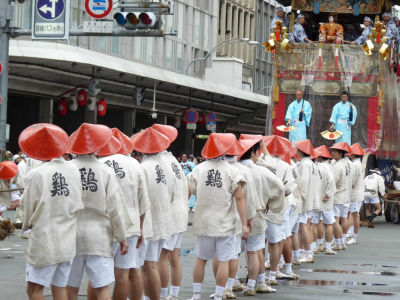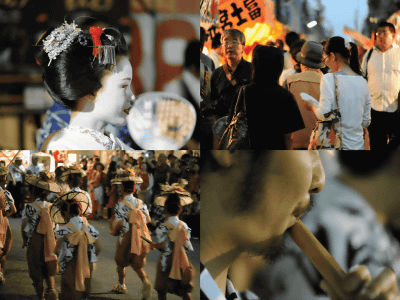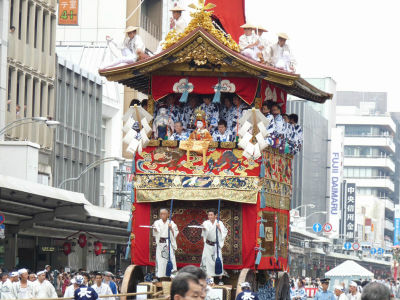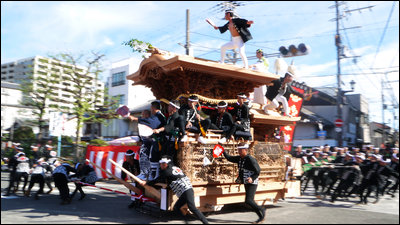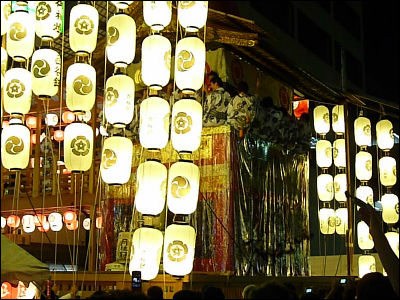Magnificent Yamaboko Junko Parade of Kyoto's Gion Matsuri 2010

Gion Matsuri is the general name for festivals dedicated to Shinto god Susanoo, held during summer throughout Japan. Among them, the Gion Matsuri of Kyoto's Yasaka Shrine is undoubtedly the most well known with its history and grandeur.
The festival spans the entire month of July and is crowned by a parade, the "Yamaboko Junko" on July 17. Following "Yoiyama" the night before, here are the pictures we took of the parade with 32 floats called "Yama"(Mountain) and "Hoko"(Pike), with dancers and marchers in traditional costumes.
Pics and videos after the cut!
9 am, police officers preparing shortly before the parade arrives.
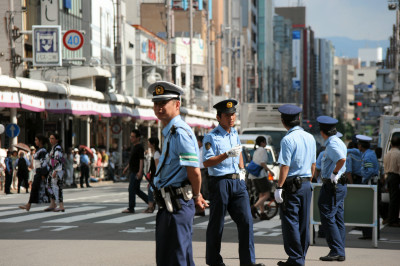
This traffic light has to be removed since it gets in the way for some of the tall floats.

The streets are blocked for the parade.
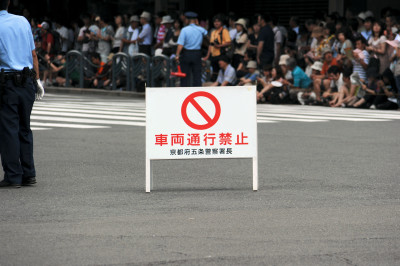
Tough job for a hot summer day.

Officers have to chastise the spectators pushing to get a good spot.
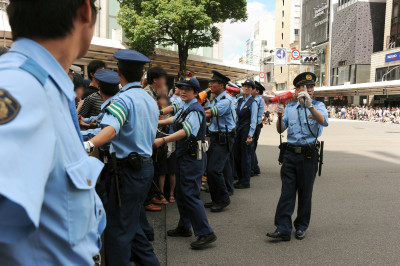
Head of the parade arrived.
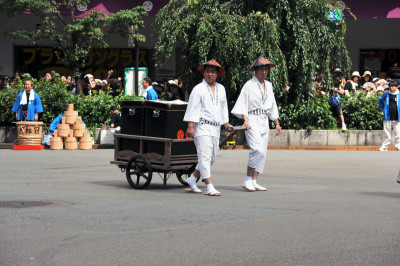
The first float "Naginata Hoko" came in view. The procession consists of 32 floats, 9 Hoko(pike) and 23 Yama(mountain). For the most part, order of the floats are decided each year by drawing lots, but some floats including this Naginata Hoko have a fixed place in the parade. Naginata Hoko has been privileged to head the procession for some years, and it is the only float to carry a boy instead of a doll as the "chigo", the deity's sacred page.

At the crossing of Shijo Street and Kawaramachi Street, the floats take a 90 degree turn. The axles are fixed to the Hoko's body, so a Hoko has to skid on slippery surface (bamboo plates and water) in order to make a turn. This elaborate process is called "Tsuji-Mawashi", considered one of the highlights of the parade.

Pouring water on bamboo plates.
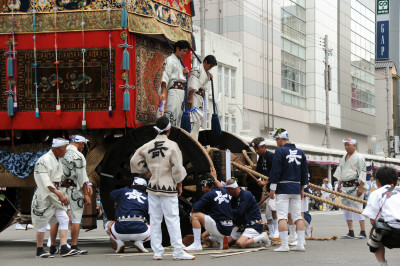
Men on the roof of the float must have been risking heat stroke this day.

Since the float is so heavy, it requires quit a lot of manpower to overcome the friction even with the wet bamboo plates.
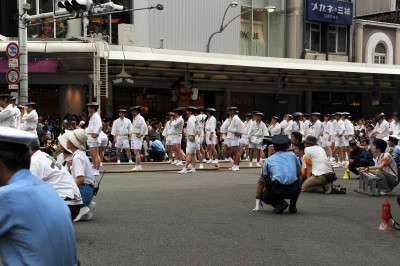
Setting the rope for the pull.
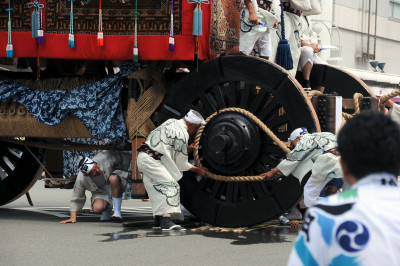
Musicians were playing all the while.

Men on the float signaling and conducting the team.
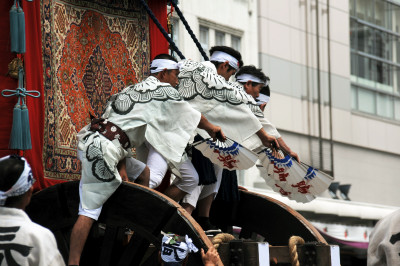
The float skids on bamboo with shattering noise.
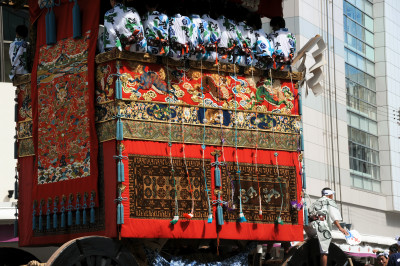
Tidying up after the turn.
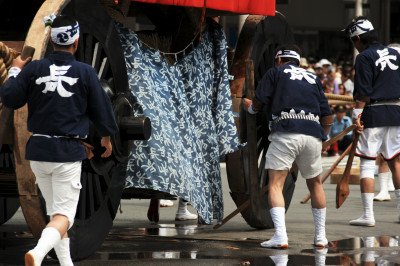
The float only skids bit by bit, so it takes several tries to make the whole 90-degree turn.
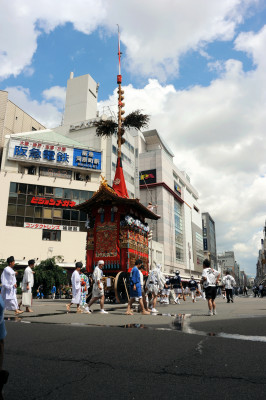
The whole Tsujimawashi process takes about ten minutes. Here's a video.
YouTube - Naginata Hoko Float's "Tsujimawashi" in Gion Matsuri 2010
Most Yama floats are smaller and lighter compared to Hoko floats, so it's easy to handle. Just lift it up and make the turn.
YouTube - Tokusa Yama Float's "Tsujimawashi" in Gion Matsuri 2010
But some of the Yama floats carrying people, called "Hiki Yama", are as large as Hoko floats and require the whole bamboo and water process. This one is Iwato Yama, 22nd in the parade.
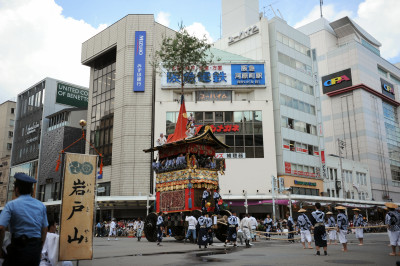
Hoko floats are bigger and heavier in general, but this Shijo Kasa Hoko, shaped like an umbrella(kasa), is an exception.
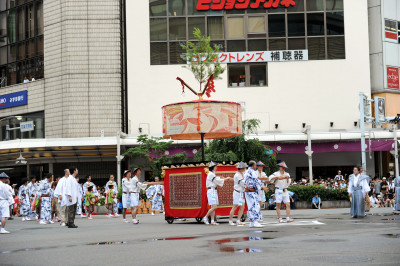
Fune Hoko looks like a ship(fune).
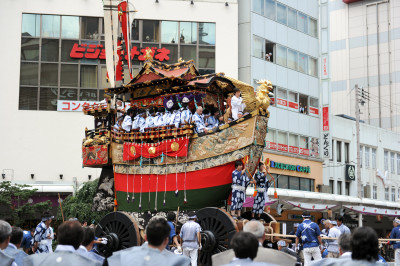
Toro Yama, also called Kamakiri Yama. "Toro" is an older name for "Kamakiri(praying mantis)" and the float has a clockwork praying mantis on its roof.

Hashi Bankei Yama depicts the famous duel between Ushiwakamaru and Benkei which is said to have taken place on Gojo Bridge in central Kyoto, around AD 1170 or so.

Jomyo Yama depicts another historical scene, the battle between Tsutsui Jomyo and Ichirai Hoshi nfrom Battle of Uji(1184).
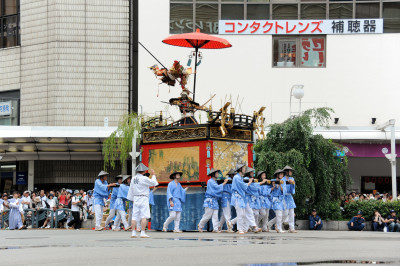
Some of the floats perform a little show before Tsujimawashi.

A dancer of Ayakasa Hoko float.
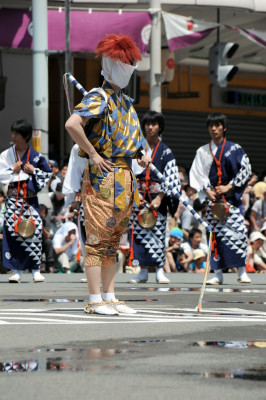
This is called "Bo-furi Bayashi" in which a troop of musicians plays bells and drums around a demon-masked main dancer swinging a rod.

Niwatori Hoko performed a Bunraku-like puppet theatre using the Chigo doll.
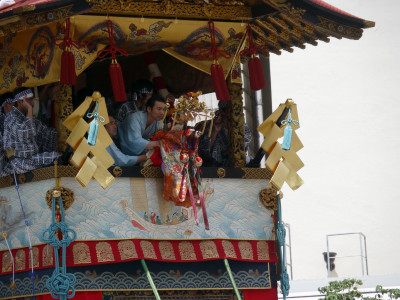
The cameramans were hardcore.
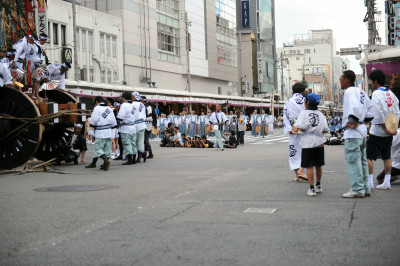
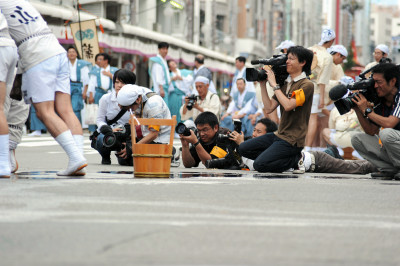
People were also watching from buildings.
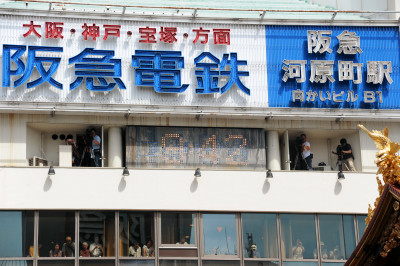
The procession heading north on Kawaramachi Street after the turn.
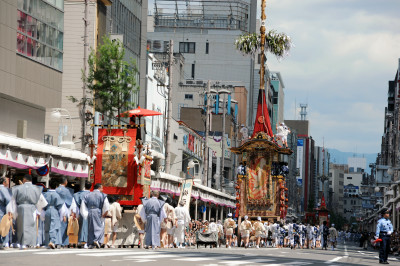
Some people fainted in the heat and got carried away on stretchers.
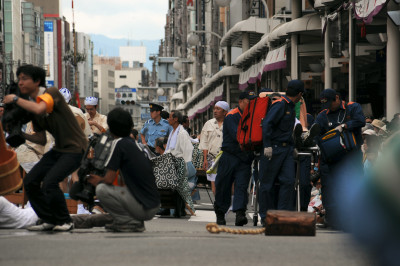
Seems like some kind of emergency happened on the north-east corner.
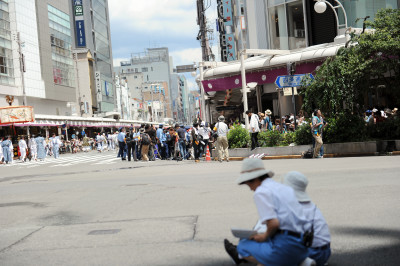
The press rushed to find out what's going on, abandoning the parade for a while.

The grueling heat must be hard for the marchers.
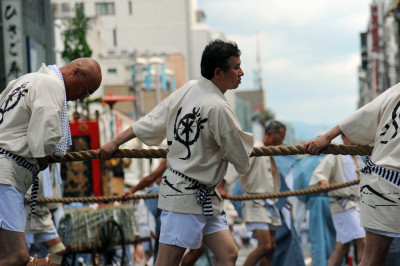
As well as the police officers.
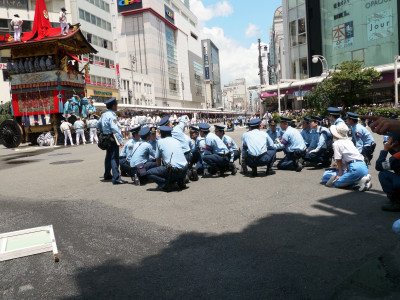
Here are some amazing decorations on floats, some of which have been designated as important cultural properties.
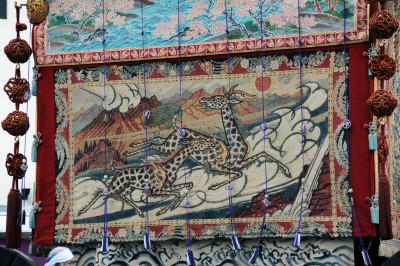
Persian carpet used to be imported to Japan through the Silk Road.
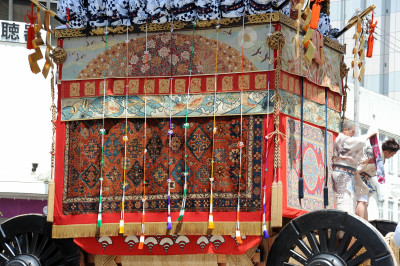
Tapestries on the back of the floats are called "Miokuri". This one had a gorgeous tapestry of peacock.

This one must have travelled all the way from Europe via the Silk Road.
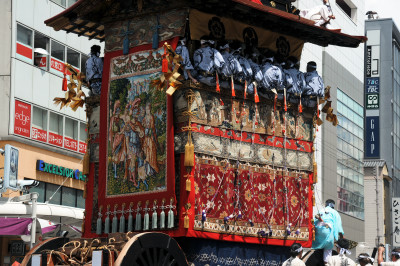
This one looks Egyptian.
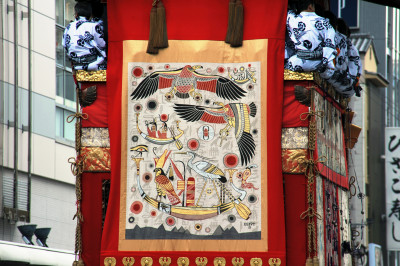
A banner announcing the arrival of the last float, Minami Kannon Yama.

The float came in view.
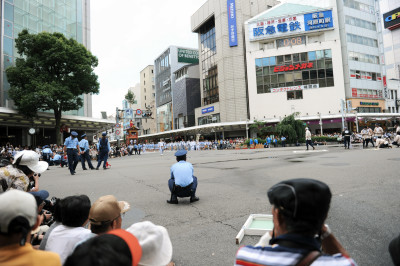
The marchers looked a little worn-out.
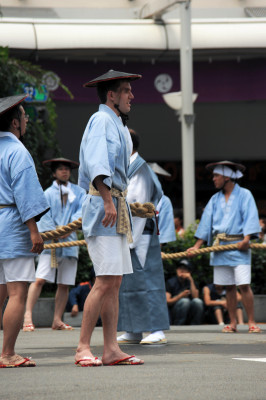
The final Tsujimawashi of the year.
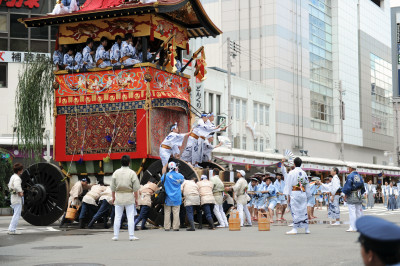
Changing direction bit by bit.
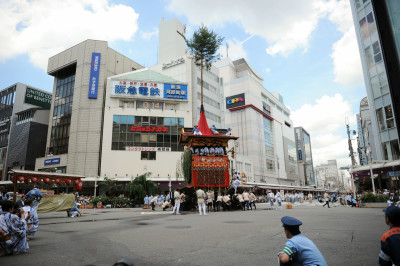
The whole parade took around three hours to get through this corner.
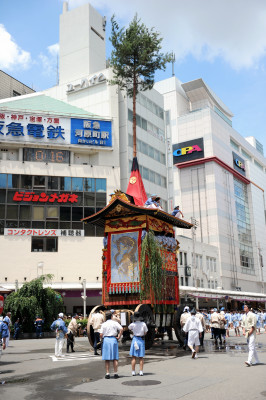
The parade might look pretty "slow" compared to fast-pased Mikoshi parades in some other Japanese summer festivals, but maybe this was how the time passed back in the Heian period when the Gion Matsuri originated.
Related Posts:
in Coverage, Posted by darkhorse_log

